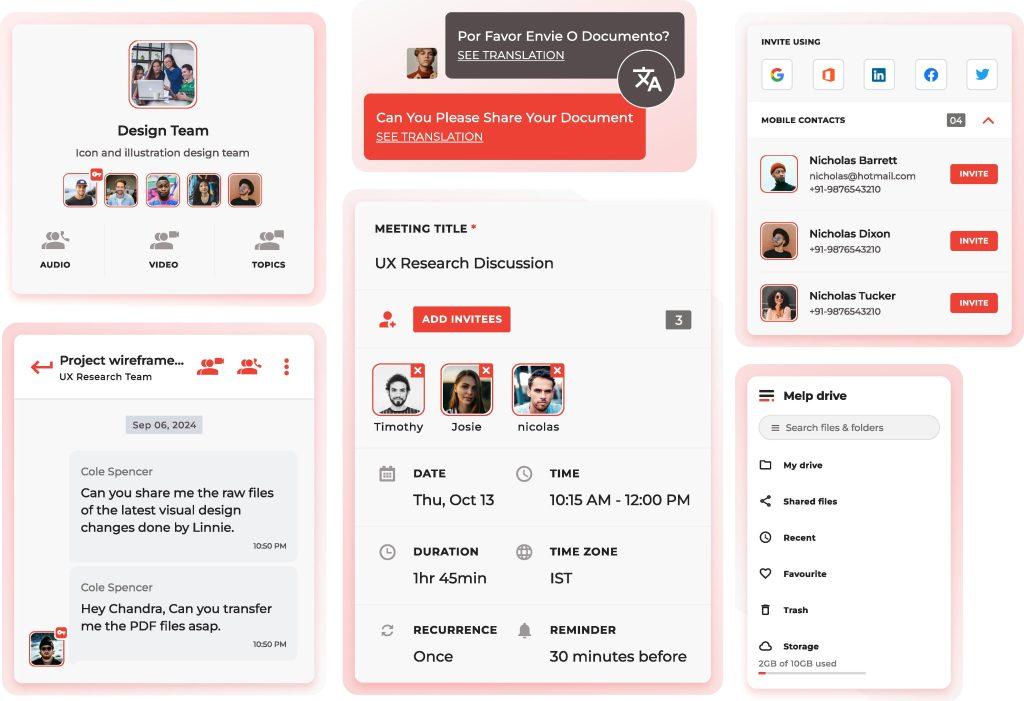MelpApp: A Game-Changer for Team Communication and Collaboration
In today’s fast-paced business world, effective communication and collaboration are essential for success

In today’s fast-paced business world, effective communication and collaboration are essential for success

Let me ask you something. Are you a business owner? Are you a team lead? Are you a member of a team? If you are any of these, let me directly put it

To add featured content go to Theme Options -> Homepage (Featured) and turn the switch on then add the content you want for each section.
Introduction Every leader eventually realises their business can’t grow on talent alone. You can hire smart people and build strong processes, yet something still feels off—hesitation, unclear communication, loose ends, and almost-ownership that never fully turns into real accountability. It’s exhausting to hold everything together by yourself. That’s why many leaders turn to something dependable
Every organization today faces a similar challenge — staying connected and secure at the same time. Whether teams are working from offices, homes, or scattered across continents, companies need a digital space that feels safe, simple, and reliable. The truth is, collaboration without security is no longer an option. In this growing market, a few
Introduction: When One Wrong Click Changed Everything One click. That’s all it took. A small but growing design agency in Texas was wrapping up a client presentation when an employee mistakenly shared the wrong folder link. Within hours, confidential client data—contracts, project drafts, payment details—was circulating online. The agency didn’t just lose a client that
Introduction: The City That Never Sleeps, But Often Stumbles on Its Tools It’s 8 a.m. in New York. Coffee cups clink, startup founders type at full speed, and yet, half the morning disappears before real work even begins. Everyone’s chasing updates buried in emails, pinged across apps, or lost in endless meeting links. If there’s
Introduction Across Europe, the idea of “work” has outgrown office walls. Teams no longer gather around the same table every morning. Today, designers in Madrid brainstorm with marketers in Berlin, while developers in Warsaw fine-tune projects for clients in London. It sounds exciting — and it is — but it’s also becoming increasingly complex. What
Let’s be honest — most of us never planned to spend our workdays hopping between tabs like acrobats. One moment, you’re replying to a Slack message. Next, you’re hunting for a file in Google Drive, only to realize the version you need is buried inside someone’s email attachment. Then it’s time for a Zoom meeting
In San Francisco, the future is built every day. It’s where small ideas turn into massive companies, where coffee chats become funding rounds, and where teams chase innovation with unmatched speed. But even in the world’s most forward-thinking city, there’s a growing problem quietly slowing teams down — tool overload. Most startups begin with good
Introduction Every organization today depends on more than its internal team. Growth now comes from partnerships — with vendors, clients, agencies, freelancers, and distributors. This network of relationships defines how fast you move, how well you deliver, and how securely you operate. Yet, managing this web of external partners isn’t easy. Conversations happen across different
Growing businesses live in the gray area between chaos and structure. Meetings are happening everywhere, projects move fast, and teams are constantly switching between tools — one for chats, another for files, another for scheduling. It’s easy to see why so many companies start by using a Meeting Scheduling Tool. It’s simple, clean, and it
Simply relying on a Meeting Scheduling App to book calls isn’t enough anymore. Modern teams want more than just calendar links and time slots — they want connection, context, and collaboration that actually moves work forward. If your team uses a Meeting Scheduling App and still struggles with scattered chats, disconnected tasks, and missed follow-ups,